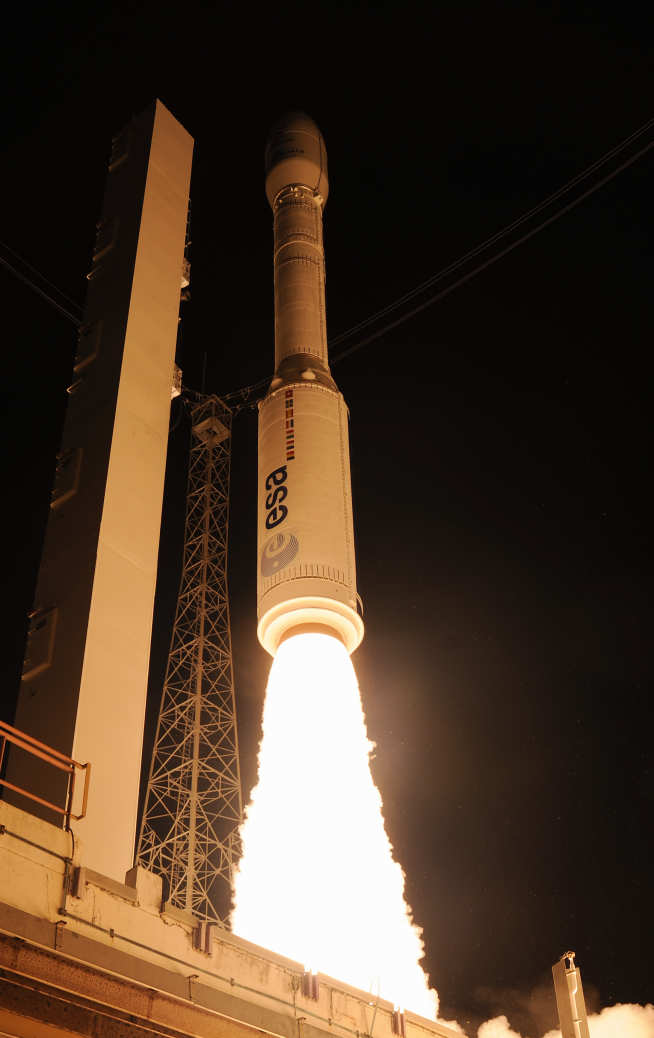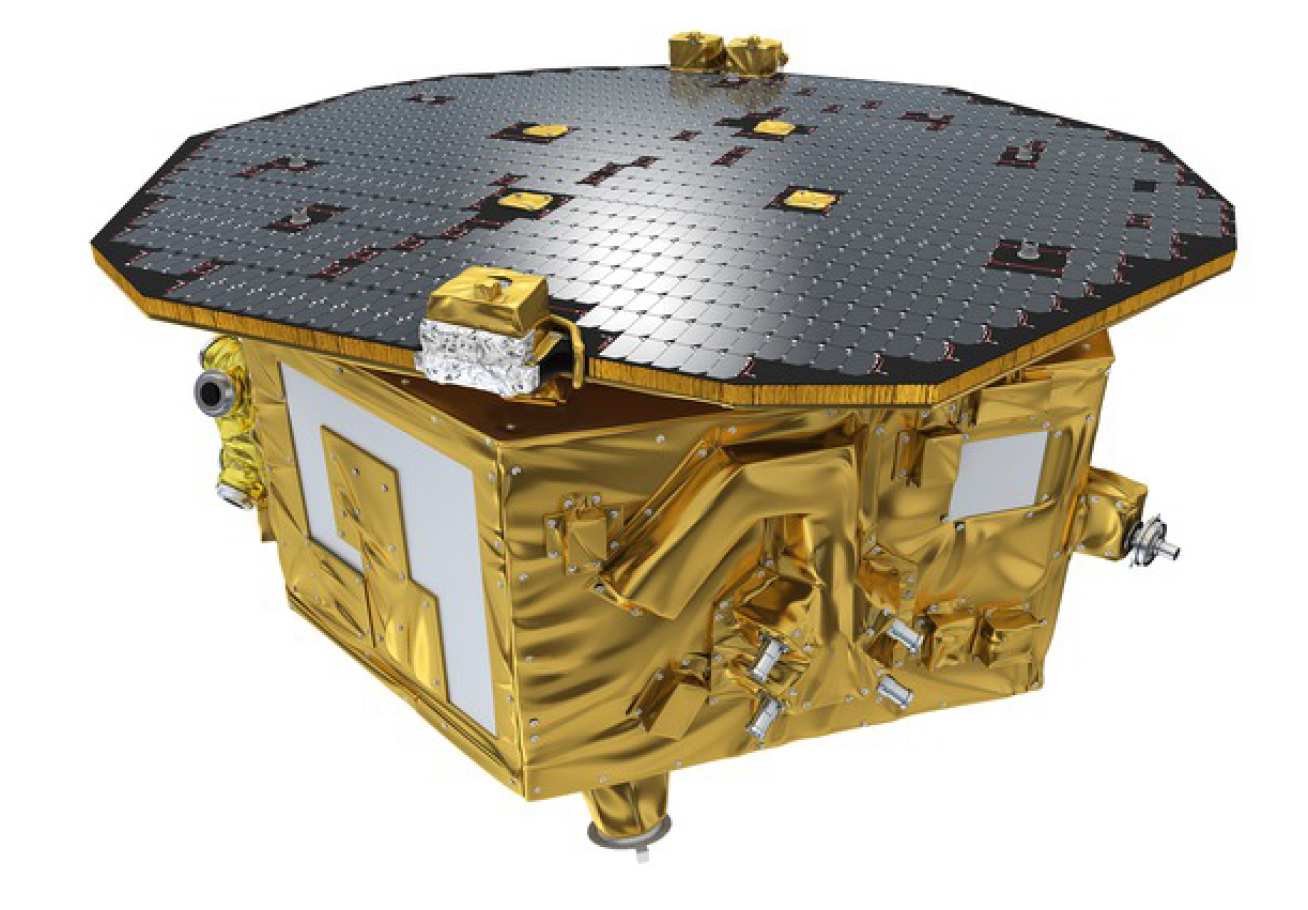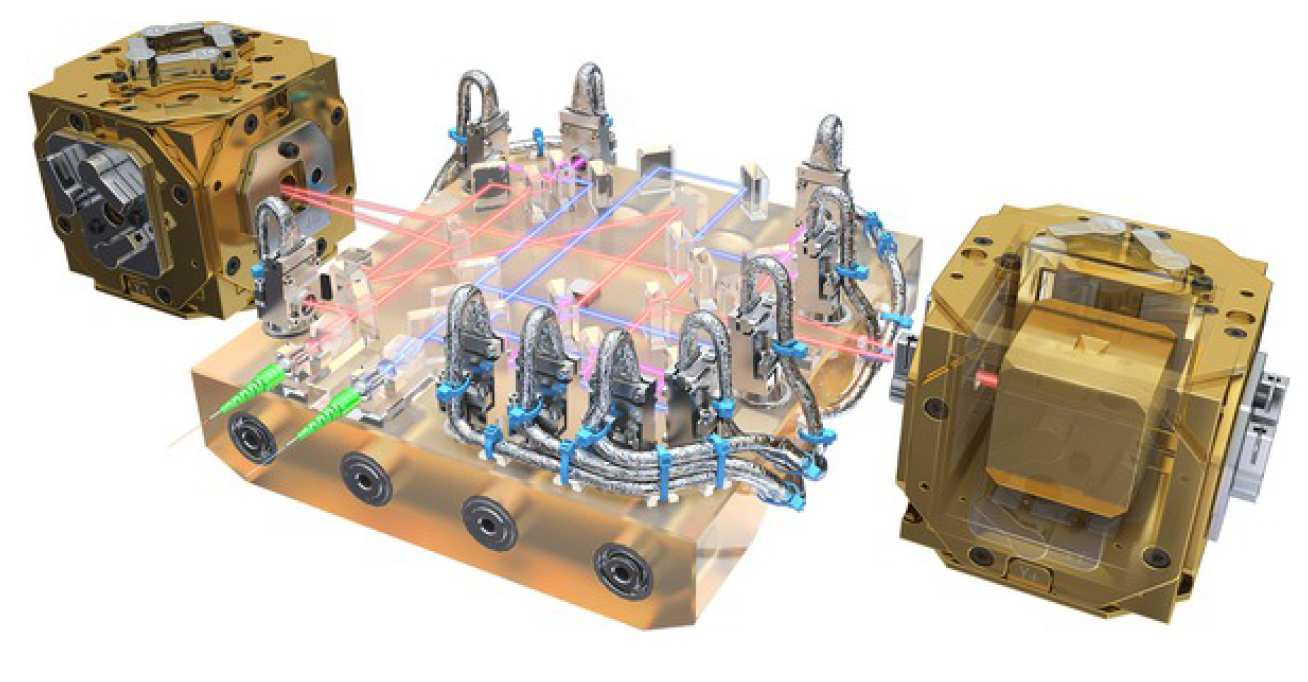T Sumner, P Wass, D Hollington, J Baird

LISA Pathfinder launched from Kourou in French Guiana on at 0404UTC on 3 December 2015. The mission is aimed at demonstrating the technology required for a gravitational wave observatory in space, eLISA. The High Energy Physics group at Imperial College have been involved in the project since the 1990s, calculating the effect of the high-energy cosmic ray environment on instrument performance, building components for the spacecraft’s instrument and preparing experiments and data analysis tools to carry out in orbit.
LISA Pathfinder details

In order to measure the tiny distortions in space produced by gravitational waves the forces acting on the test masses of eLISA must be reduced to a level below 6fN/√Hz at frequencies between 0.1mHz and 10mHz. LISA Pathfinder will make measurements to show that this challenging goal is feasible, compressing one arm of the LISA interferometer to 38cm within a single spacecraft.
The relative motion of two test masses will be measured with pico-meter accuracy using a laser interferometer. Deriving the relative acceleration of the masses provides a measure of the forces exerted on them that in eLisa could disturb gravitational wave observations. During the LISA Pathfinder mission a series of experiments will be conducted to measure and characterise the contribution to the limiting performance of the instrument coming from a range of physical effects.
In order to maintain the test masses in complete isolation from their environment, the spacecraft must follow their pure geodesic motion or free-fall through space. To do so a system of capacitive sensing is used to determine the test mass positions; on-board software uses the position information to command micro-Newton thrusters pushing the spacecraft against solar radiation pressure and keeping the test masses centred in their housings.

If the test mass becomes charged, electric fields within the capacitive sensor can create an unwanted force on the test mass. Such a charge can build up because the spacecraft is constantly bombarded by high-energy cosmic rays – mostly protons and helium nuclei – which penetrate the shielding of the spacecraft. Occasionally eruptions of particles from the Sun will cause the test masses to become charged even more quickly.
Imperial College scientists have used physics simulation tools developed for high energy physics experiments to model the interaction of the cosmic rays with the spacecraft and instrument structure. The results of these simulations have enabled scientists to predict the disturbing effects of environmental test-mass charging and how often it will be necessary to discharge the test masses to maintain the best performance of the instrument. The particle flux responsible for charging will be monitored independently on board by a radiation monitor, providing diagnostic information to compare measured charge rates with predictions.
The test masses must be kept electrically neutral but without introducing additional force disturbances. Imperial College HEP group has designed and built a system of UV lamps that illuminate the gold surfaces of the test mass and surrounding sensor, liberating electrons by photoemission. By carefully controlling the illumination, the test mass can be positively or negatively charged until the net charge is zero.
The UV Lamp Unit (ULU) contains six UV mercury discharge lamps, control electronics and the communications interface with the rest of the spacecraft. The electronics that control the lamps were designed in-house by Imperial engineers and the structure of the unit was built in the physics instrumentation workshop. The light from the lamps is filtered and focused into specially designed fibre optics that deliver it from the outer structure of the spacecraft to the sensitive inner core of the instrument.
Rigorous testing had to be carried out to show that all components can withstand the harsh radiation environment of space as well as the mechanical vibrations and shocks that occur during launch. Once in space, repairs are impossible so each function of the unit has a spare or redundant counterpart that can be enabled in case of a failure. In orbit, all units on the spacecraft will be switched on and checked out to ensure no damage has occurred during launch and that the system is behaving as it was when tested on ground. When all systems have been given the OK the test masses will be released into free fall and the mission proper can begin.
LISA Pathfinder is an ultra-high precision physics laboratory in space. Mission operations will consist of a series of experiments aimed at measuring and characterising all the forces acting on the test masses.
A typical experiment involves injecting a known disturbance into the system, using coils to produce a magnetic field at the test mass for example, and measuring the force on the test mass that arises as a result. Later, during a ‘quiet’ measurement of force noise, the calculated coupling factor can be used to convert the measured background magnetic field into a contribution to the total force on the test mass. By repeating this process for all sources of force noise in the instrument it will be possible not only to demonstrate the feasibility of a gravitational wave observatory but to understand the improvements that must be made to achieve the performance goals of eLISA.
Experiments will be executed autonomously by the spacecraft from a plan defined up to 7 days in advance. Data from the satellite will analysed on a daily basis and the results used to update the experiment schedule. Given the short duration of the mission, scientists will have to work to an intensive schedule in order to obtain the maximum possible information from the on-board measurements.